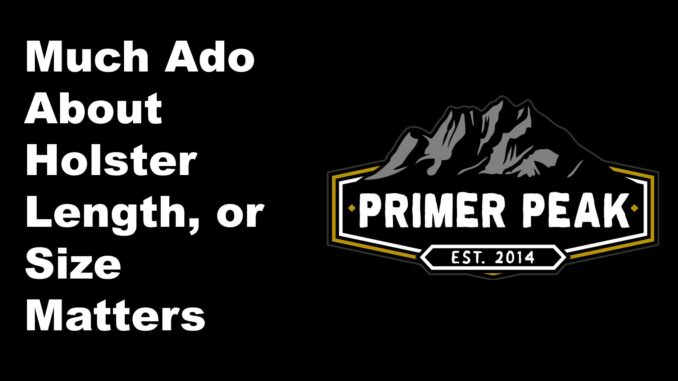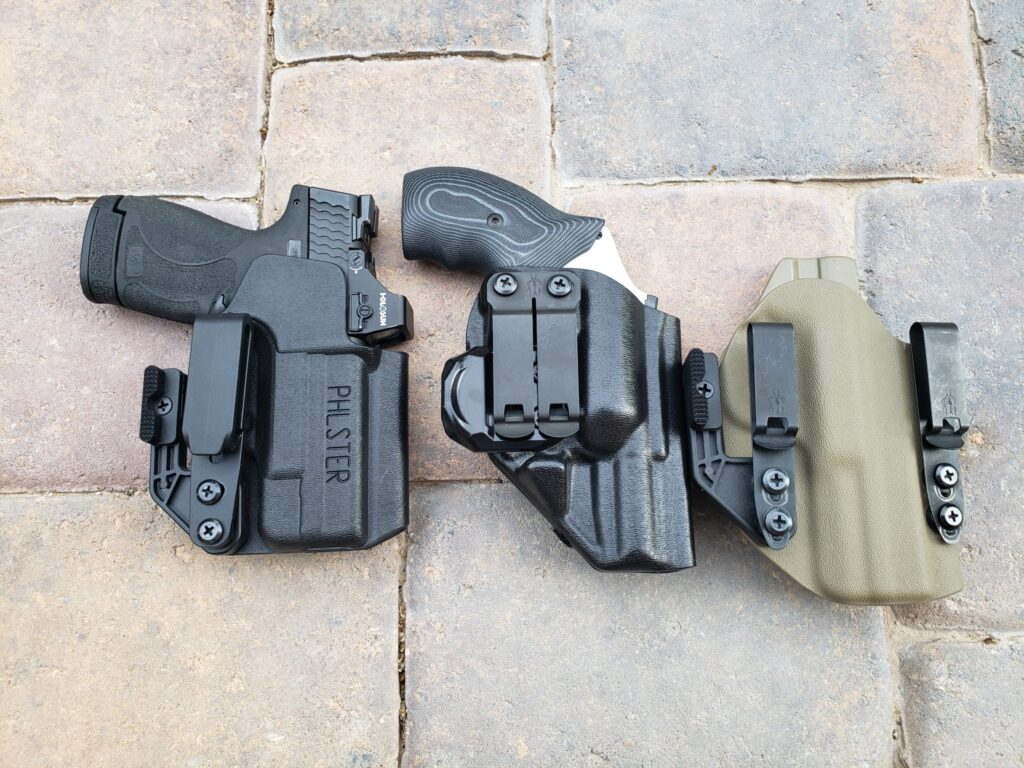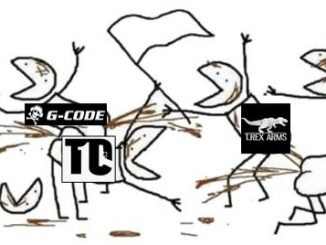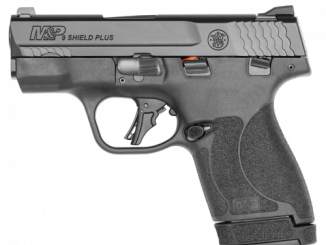
I’ve written about holsters extensively in the past. One subject that I cover is the length of holsters, and how sometimes, longer is better. Over the past year, I’ve continued to learn and grow. In some cases my opinions have changed either due to new experience or new perspectives. One area in which my opinion has shifted is regarding holster length.
Longer Is Better – Or Is It?
Previously I beat the “longer is better” drum when it came to holster length. The theory here is that a longer holster gives you more leverage for better concealment. This is often referred to as the “Keel Principle”, like on a boat. Additionally, the greater length improves comfort when seated by resting alongside the groin, rather than sitting atop it, pressing downwards onto a sensitive area.

Both of these opinions were based upon personal experience with shorter holsters such as a G-Code INCOG for G26, and Blade Tech Nano for Beretta PX4 Compact. This is along with a variety of longer holsters I’ve covered here previously from KSG Armory, PHLster, Tenicor, and others. My concealment and comfort with these shorter holsters was dismal compared to what I got with longer offerings. Even when moving to a massive combination of G34+X300U, I was shocked to see both areas dramatically improved.
With these experiences in mind, it’s no wonder why I threw the baby out with the bath water regarding shorter holster length.
Shifting Gears
Over the past year I’ve slowly found my opinion shifting once again. A few shorter holsters found their way into my waistband, both purchased and sent for purposes of review. When I started my .30 Super Carry saga last fall, I picked up a PHLster Skeleton for the S&W Shield Plus as a quick concealment option. Coming in at just over 3-inches in barrel length, it’s one of my shorter autoloading holsters. Several months earlier, Harry’s Holsters sent me an Icon 2.0 for review, set up for a 2-inch S&W J-Frame.
Each holster provided significantly different carry experiences. This caused some confusion at first, but eventually I began to understand the “why” behind what I was experiencing.
Real World Learning
The Icon 2.0 first arrived for me in the early Spring of 2023. Over the past year it slowly became a staple of my EDC, becoming my go-to when carrying the S&W 351C and more recently my S&W 632UC. It saw use in long road trips, at Revolver Roundup, and my day-to-day life. Despite my concerns with shorter holsters, those past problems never popped up here. Comfort was exceptional, concealment was great, security and access presented no concerns.

With this in mind, I had no hesitation regarding holster length when ordering a PHLster Skeleton for the Shield Plus. Unfortunately, things didn’t go so smoothly here. In no time at all I began running into issues with both comfort and concealment. You can imagine my surprise, considering the similar size of the two gun and holster combinations. What was it about this that was creating issues?
Contributing Factors
I believe I have two main sources for the problems I experience with the PHLster Skeleton compared to the Harry’s Icon 2.0.
The first is a difference in balance. The Shield Plus touts 16+1 rounds of 30SC in the magazine, sitting high above the beltline. Compare this to the cylinder of a revolver, sitting flush or just below the belt, keeping the center of gravity much more central. The Shield Plus magazine weight results in more tipping, exacerbated by the larger grip allowing for more leverage to be imparted compared to the smaller stocks of most J-Frame revolvers.

Difference number two is shaping, specifically regarding the muzzle end of the holster. The PHLster Skeleton has to accommodate the taller side, and accompanying dust cover, resulting in a larger and more rectangular holster. The Harry’s Icon 2.0 is more triangular in the transition from trigger guard to muzzle, also thinner and more rounded on the edges, providing more gentle changes in geometry rather than the blockier autoloader. This is supported by similar issues experienced with the blockier PHLster City Special versus more conventional revolver holsters.
A third major difference here is the method of attachment to the belt. The PHLster Skeleton uses a single polymer belt clip to support the weight of the gun. The Icon 2.0 and others feature a DCC Monoblock, providing significantly more support and security for your handgun. With the Skeleton I experience a serious amount of rotation during long carry days, to the point of the holster nearly popping out of my pants. This is something I’ve experienced in the past, though to a lesser degree, with the INCOG and T.Rex Arms Sidecar.
As an Aside
Don’t take these specific examples as attacks or praises of specific holster manufacturers. These are simply the items that I have personal experience with. The lessons apply across the board, to all manufacturers.
Closing Thoughts on Holster Length
It turns out that there’s more to choosing holster length than once thought.
A longer holster can help keep an autoloading pistol anchored in place using the Keel Principle. Revolver geometry and weight distribution can make shorter holsters more viable, despite “common” tactical wisdom. While quality belt attachments are always a critical component for retaining your holster, we must also be sure to match the appropriate components with our guns. Something that works to secure a subcompact .380 may not work for a Shield Plus or metal frame gun.
Play with both variations on holster length, maybe you’ll learn something new.
For more information, check out my guide How to Choose a Good IWB Holster
Support My Work
If you made it this far, thanks for reading! Writing isn’t my full-time profession, and nearly everything I do comes out of my own pocket. Between ammunition, tuition, range fees and more, expenses add up fast. If you like what I have to offer, consider making a donation to my Patreon.
Every bit helps bring more work like this to you, and contributes to shortened timelines or more in-depth work on my part. You’ll also have more direct access to me, offering suggestions for future projects, looking behind the scenes, and getting early access to some content. You can find my Patreon >>HERE<<





Be the first to comment